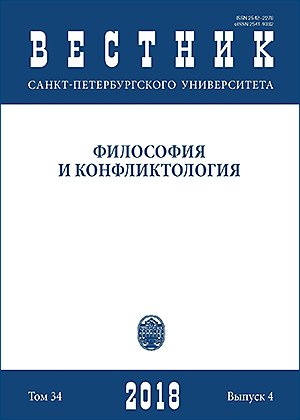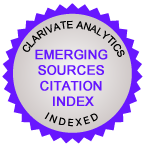Researchers of popular religiosity: J. J. Lens
DOI:
https://doi.org/10.21638/spbu17.2018.415Abstract
This article describes works of Yakov Lensu - a researcher of religious beliefs and culture of the Finno-Ugric peoples which lived on the territory of the Leningrad Region in 1920s to 1930s. He was one of the first Russian researchers, who described the syncretic religious beliefs and customs of the Ingrians Finnish ethnic subdivisions (Yevremeyans and Savakotes), as well as the Finno-Ugric peoples of Izhora and Vod. From the beginning of the 1920s Y.Lensu was actively working at the summer expeditions of the Commission for the Study of the Tribal Composition of the Population of the Borderlands of Russia (KIPS). Later he was working at the Institute for Studies of the Peoples of the USSR (IPIN), in which culture and the life of the USSR peoples were studying. The religious life map of USSR was also compiling there. Yakov Lensu was regularly participating the section of the study of religious beliefs of the peoples of the USSR, led by Nikolai Matorin. The section was functioning in the Museum of the History of Religion of the Academy of Sciences of the USSR for many years until N.Matorin was arrested. Y.Lensu was also engaged in different linguistic research. He was studying Izhora and Vod peoples’ dialects. In the appendix of this article the part of the manuscript of Y.Lensu’s research work “About Finnish people beliefs at the Leningrad’s environ” is published. Lensu described various mythological characters like a demons of natural loci and demons-assistants in this text. Among the demons-assistants an important place was occupied by Para: three-legged demonic creature, which helped housewives to increase milk quantity of cows. It was important because milk production was traditional for the Finnish people of Ingri. Texts of conspiracies from bleeding and from snake bites are also included in the manuscript.
Keywords:
history of Religion in Russia, popular religiosity, the history of the study of religion in Russia
Downloads
References
Downloads
Published
How to Cite
Issue
Section
License
Articles of "Vestnik of Saint Petersburg University. Philosophy and Conflict Studies" are open access distributed under the terms of the License Agreement with Saint Petersburg State University, which permits to the authors unrestricted distribution and self-archiving free of charge.






